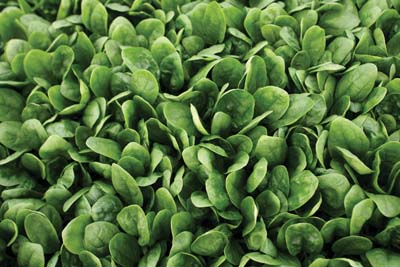
Global health officials said Thursday that a deadly outbreak of
food-borne illness in Europe is being caused by an unusually
virulent and toxic new strain of bacteria that scientists haven’t
seen before and may be dramatically more dangerous than typical
outbreaks.
Noam N. Levey and Henry Chu
Global health officials said Thursday that a deadly outbreak of food-borne illness in Europe is being caused by an unusually virulent and toxic new strain of bacteria that scientists haven’t seen before and may be dramatically more dangerous than typical outbreaks.
The bacterium – a mutant form of common E. coli – has already killed at least 17 people in Germany and Sweden and sickened 1,614 in 10 countries in Europe, according to the World Health Organization.
And unlike normal forms of the bacterium, which can cause serious diarrhea, this strain is leading in many cases to a more severe reaction known as hemolytic uremic syndrome, or HUS, which can lead to seizures, strokes and kidney failure.
“That is an incredibly high incidence of systemic disease,” said Arthur Donohue-Rolfe, an expert on E. coli who chairs the Department of Biomedical Sciences at Tufts University’s Cummings School of Veterinary Medicine.
The outbreak has prompted the U.S. Food and Drug Administration to step up monitoring of fresh produce from Western Europe, which German officials have identified as the likely cause of the outbreak.
“We have flags in place that will let us know about those products and we will pull those products,” said Dara Corrigan, the FDA Associate Commissioner for Regulatory Affairs. “They will be stopped, they will be sampled. And they will be analyzed.”
Corrigan said no foods suspected in the outbreak – including fresh tomatoes, cucumbers and lettuce from Spain and Germany – have come into the United States since the problem was reported.
FDA is also monitoring fresh produce from the United Kingdom, Sweden, Denmark and the Netherlands, where cases of the outbreak have also been reported.
Scientists said that these kinds of food-borne illnesses – caused by bacteria that get on food from animal fecal matter – are not typically transmitted from one person to another.
But as the death toll continues to mount in Europe, federal agencies in the U.S. are monitoring the outbreak, which has sickened at least two Americans who traveled recently to northern Germany, the epicenter of the disease.
The U.S. Centers for Disease Control and Prevention in Atlanta said the new strain of E. coli has never been seen before in the United States.
Although the elderly and the young are usually most affected by toxic bacteria, the majority of patients who have come down with hemolytic uremic syndrome have been adult women. The reason is still unclear.
The Beijing Genomics Institute, which has been working with German authorities to sequence the new strain, also reported that it is resistant to several antibiotics, although E. coli infections are not typically treated with antibiotics, which can exacerbate symptoms.
The overwhelming majority of patients are in Germany, and virtually all those outside Germany had recently traveled to the northern part of the country or come into contact with someone else who had, the WHO said.
After Germany, Sweden has been hardest hit, with at least 43 people infected and one dead.
German health officials believe that the E. coli bacteria were found on tomatoes, lettuce and cucumbers, and have warned residents not to eat those vegetables raw.
The mounting infection toll and the failure to pinpoint its source have sparked a war of words between Germany and Spain and negatively affected farmers in several European countries.
With no reported infections yet, Russia announced Thursday that it was banning all fresh produce from the European Union, widening an embargo previously directed only at Spain and Germany. EU officials criticized the ban as excessive.
The United Arab Emirates is also temporarily blocking imports of cucumbers from some European countries.
Tensions have risen between Madrid and Berlin after German health officials wrongly blamed Spanish cucumbers as the source of the outbreak. Germany later withdrew the claim, saying that although some Spanish cucumbers did have E. coli on them, the bacteria were of a different strain from the one behind the current outbreak.
Spanish farmers have lost an estimated $300 million, forced to dump tons of their harvest because of Germany’s accusations. On Thursday, Prime Minister Jose Luis Rodriguez Zapatero added his voice to the chorus of Spanish officials demanding that Germany pay damages.
Zapatero told Spanish radio that his government would seek “conclusive explanations and sufficient reparations” from Germany.
Identifying the source of food-borne illnesses can be challenging, according to experts.
And Dr. Lynne A. McLandsborough, a food microbiologist at the University of Massachusetts, said E. coli outbreaks associated with salad vegetables are particularly troubling.
“When it’s scary is when we see outbreak with foods that people don’t normally cook,” she said.
Randy Worobo, a food microbiologist at Cornell University, said the United States has developed effective methods for containing the spread of illnesses like E. coli.
“We have a good monitoring system with the CDC and public health system,” he said. “We track food-borne outbreaks and we can identify the source.”









